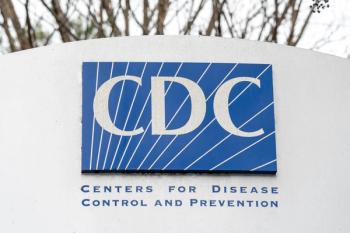
Nicotine pouch use nearly doubles among US high school students
A recently published study found sharp increase in the use of nicotine pouches among US high school students, with usage nearly doubling from 2023 to 2024.
A recent study conducted by researchers from USC’s Keck School of Medicine, the University of Michigan, and the University of Nebraska Medical Center revealed a sharp increase in the use of nicotine pouches among US high school students, with usage nearly doubling from 2023 to 2024. The research, which surveyed over 10,000 teens, was recently published in JAMA Network Open.1 Notably, nicotine pouches are for use by adults 21 years and older.
Rise in popularity of nicotine pouches among teens
The USC study, led by Dae-Hee Han, PhD, a postdoctoral scholar in population and public health sciences at USC’s Keck School of Medicine, found that 5.4% of teens reported using nicotine pouches in 2024, up from 3.0% the previous year.
“This growing public health issue needs more attention,” said Han. “Like flavored e-cigarettes when they first emerged, the use of this new oral nicotine product is becoming more widespread, particularly among adolescents.”
Nicotine pouches, such as Zyn, have become increasingly popular on social media, with influencers often promoting their use by associating it with confidence, masculinity, and mental sharpness. This trend has raised alarms among public health organizations such as the American Heart Association and the Campaign for Tobacco-Free Kids, who are calling for stricter regulation of these products.2
Teens using both nicotine pouches and e-cigarettes
While nicotine pouch usage has risen, the survey also found a decrease in the percentage of teens who use e-cigarettes. In 2023, 20% of teens reported using e-cigarettes in the past 12 months, but by 2024, that number had dropped to 17.6%. However, the study noted an increase in dual use of both nicotine pouches and e-cigarettes, with 3.6% of teens reporting use of both products in the past 12 months in 2024, compared to 2.1% in 2023.
This trend suggests that while some teens are moving away from vaping, they are not necessarily abandoning nicotine altogether, instead turning to the pouch alternative.
Risk factors and targeted prevention
The study identified certain groups of teens who are at higher risk of using nicotine pouches, including males, non-Hispanic white students, and those living in rural areas. This demographic overlap with traditional smokeless tobacco users underscores the need for tailored prevention strategies. Researchers emphasize that nicotine pouch use differs from e-cigarette use in important ways, which means prevention efforts must be adapted accordingly.
“We’re finding that the risk profile differs quite a bit between nicotine pouches and e-cigarettes, which means we need prevention approaches that are targeted for each,” said Han.
Potential health risks and need for regulation
Although the long-term health effects of nicotine pouches remain unclear, experts caution that their use may carry risks of nicotine addiction, mouth sores, and gum irritation. Additionally, nicotine exposure during adolescence may negatively impact brain development, leading to issues with memory, attention, and learning.1
The FDA’s decision to allow the marketing of flavored nicotine pouches to adults was based on the premise that these products may serve as a less harmful alternative to cigarettes for adult smokers. And in
“Parents, teachers, and pediatricians should be aware that teen nicotine pouch use is increasing across the nation,” said study senior author Adam Leventhal, PhD, a professor at USC and executive director of the USC Institute for Addiction Science. “To reverse this trend, we need to heighten public awareness about pouches and educate youth about them.”
Next steps in research and policy
Looking ahead, the researchers stress the importance of continued monitoring of nicotine pouch use, particularly in light of the FDA’s decision. Future studies should focus on long-term trends in use, the potential health consequences of nicotine pouches, and the effectiveness of regulatory and prevention strategies.
“Nicotine pouches are relatively new, so we need time to collect data on prevalence, policy, and prevention,” said Han.
Ultimately, the researchers called for a comprehensive approach to addressing nicotine pouch use, with a focus on high-risk groups such as rural teens and those engaging in dual use of nicotine products.
Disclosure:
This study was supported by the National Cancer Institute, the FDA, and the National Institute on Drug Abuse.
References:
1. Keck School of Medicine of USC. Use of nicotine pouches increases significantly among US teens. Eurekalert. April 30, 2025. Accessed May 23, 2025. https://www.eurekalert.org/news-releases/1082181
2. American Heart Association. Public policies are vital to prevent the use of popular oral nicotine products. American Heart Association. December 3, 2024. Accessed May 23, 2025. https://newsroom.heart.org/news/public-policies-are-vital-to-prevent-the-use-of-popular-oral-nicotine-products
Newsletter
Access practical, evidence-based guidance to support better care for our youngest patients. Join our email list for the latest clinical updates.










